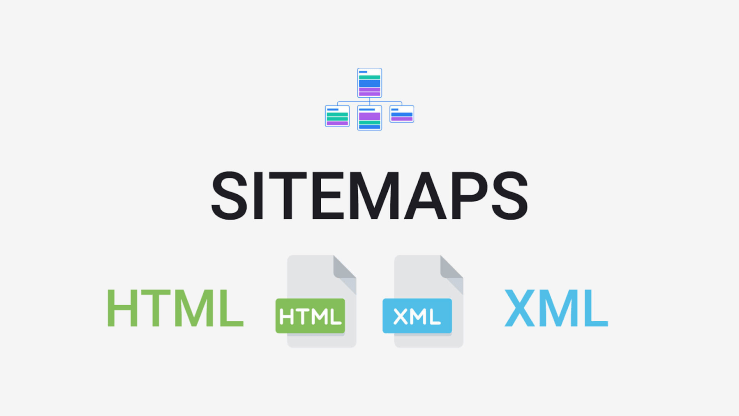Sitemaps play a crucial role in guiding search engines through the content of a website. Among the various types of sitemaps, HTML and XML are two primary formats. While they serve the same purpose, they have distinct characteristics and are utilized in different ways. In this guide, we’ll delve into the key differences between HTML and XML sitemaps, and explore when to use each type.
I. HTML Sitemap: A User-Friendly Navigation Tool
1. Designed for Humans:
– HTML sitemaps are created primarily for website visitors. They provide a clear, organized list of links to help users navigate through a website’s content.
2. Improving User Experience:
– HTML sitemaps enhance user experience by offering an alternative navigation option, especially on websites with complex structures or extensive content.
II. XML Sitemap: A Roadmap for Search Engines
1. Built for Search Engines:
– XML sitemaps are specifically designed for search engine crawlers. They provide detailed information about the structure and content of a website.
2. Enhancing Crawling Efficiency:
– XML sitemaps help search engines discover and index pages more efficiently, ensuring that all relevant content is included in search results.
III. HTML Sitemap: Navigational Benefits
1. Accessibility and Discoverability:
– HTML sitemaps act as a secondary navigation tool, making it easier for users to find specific pages, especially when the site’s main menu may not provide a clear path.
2. Facilitating Deep Page Access:
– They allow users to access deeper pages in the website hierarchy without having to follow multiple links from the homepage.
IV. XML Sitemap: Technical Advantages
1. Providing Metadata for Search Engines:
– XML sitemaps include additional information about each page, such as the last modification date, priority level, and frequency of updates, helping search engines make informed crawling decisions.
2. Handling Large and Complex Sites:
– They are especially valuable for websites with numerous pages, dynamic content, or areas that may not be easily discoverable through standard crawling.
V. HTML Sitemap: User-Centric Design
1. Visual Presentation:
– HTML sitemaps are presented in a user-friendly, visually appealing format that is easy to navigate.
2. Categorization and Hierarchy:
– They often include categorization and hierarchy, allowing users to quickly locate specific content or sections of the website.
VI. XML Sitemap: Technical Implementation
1. Automated Generation:
– XML sitemaps are typically generated using tools or plugins that automatically create and update the file based on the website’s content and structure.
2. Submission to Search Engines:
– Webmasters submit the XML sitemap to search engines via the robots.txt file or through Google Search Console, enabling better indexation.
HTML and XML sitemaps are essential tools in optimizing a website’s visibility and navigation. Understanding their distinct purposes and benefits allows webmasters and SEO professionals to utilize them effectively to enhance user experience and facilitate search engine crawling. By implementing both types strategically, website owners can create a seamless browsing experience for users while ensuring that search engines can efficiently index and rank their content.

Leave a Reply